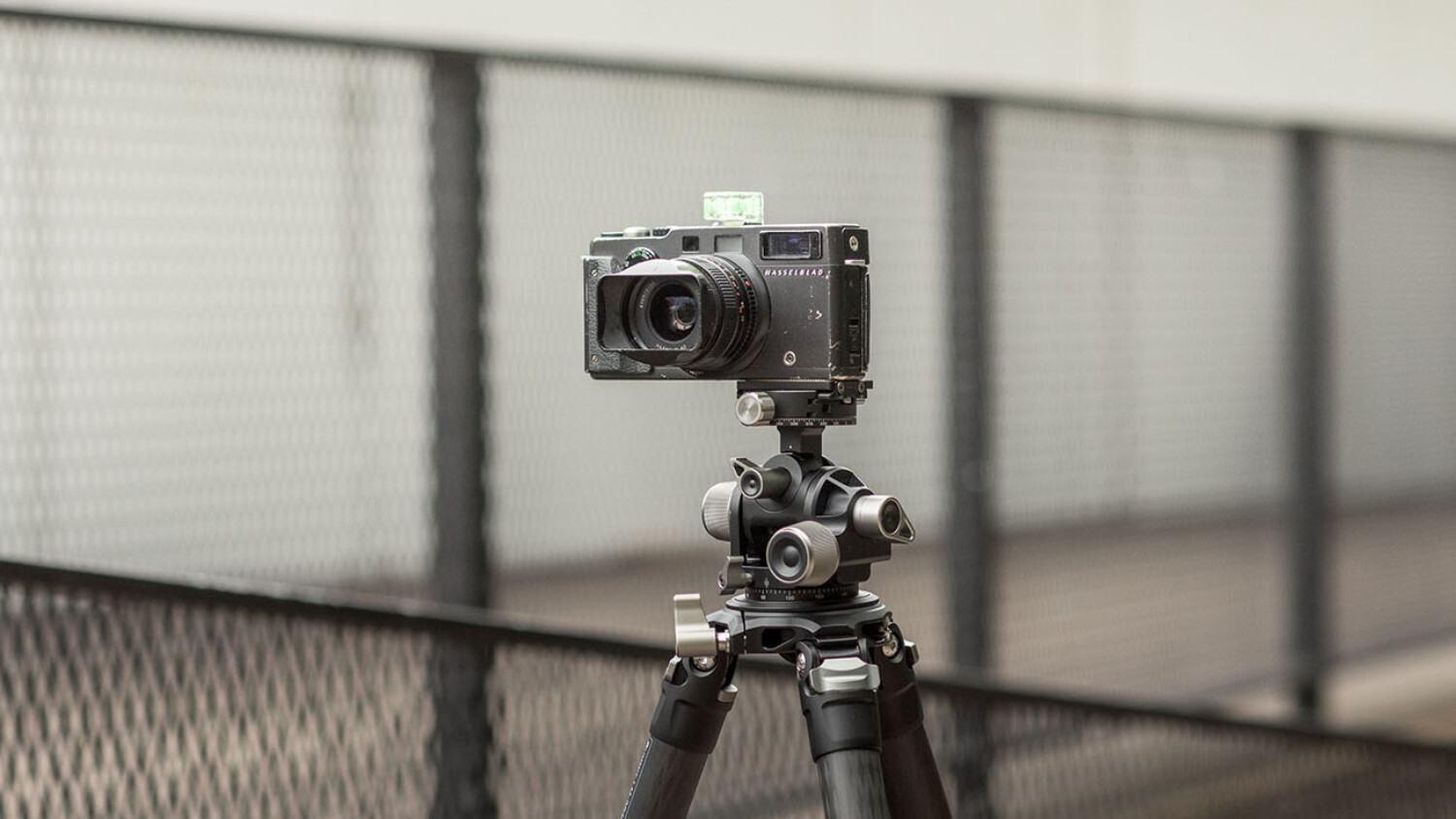One More Geared Head? APALMANAC Reviews the Leofoto G4
For some time now, I’ve been convinced that a better tripod or tripod head doesn’t make me a better photographer or improve my photographs in any way. That being said, it definitely makes my life easier and more satisfying instead of difficult. That’s why as a professional architecture photographer I always use carbon tripods from Gitzo with heads and accessories from: Arca Swiss, Really Right Stuff and Sunwayfoto. Since last year, I’ve been testing and comparing those products to equipment by the young Chinese brand Leofoto. The results were very satisfying.
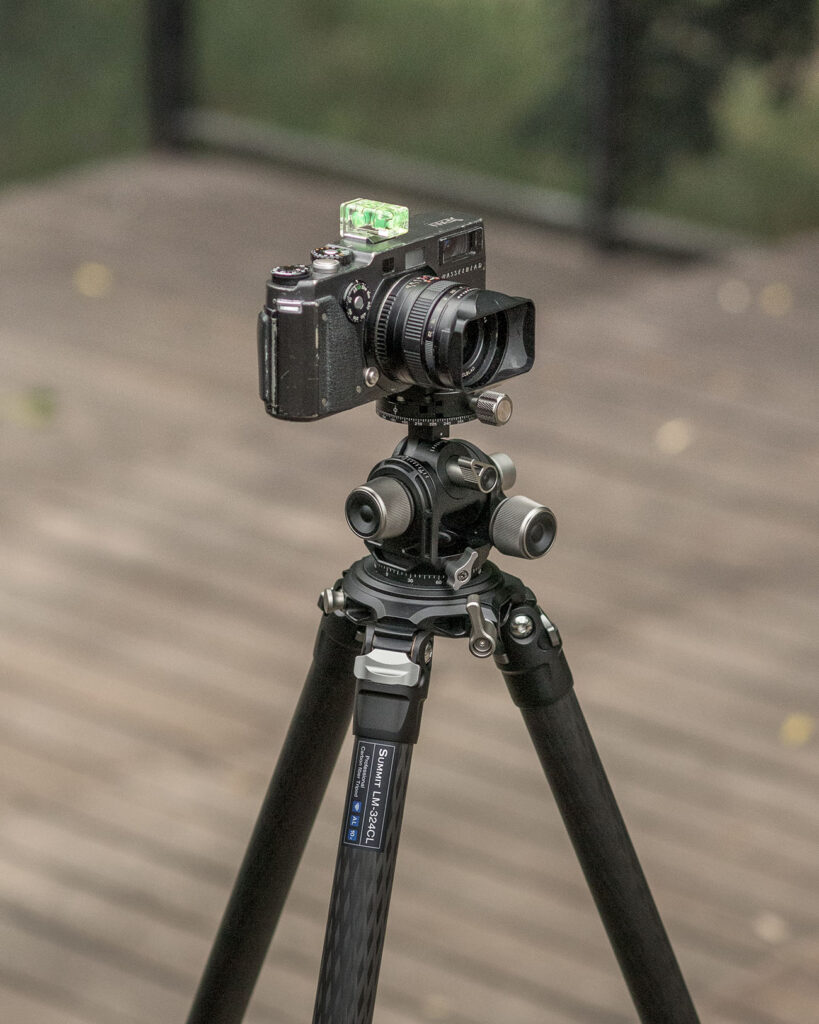
My first experience was with a small and light ball head LH-36 that was attached to an LQ-284C tripod, since it was very good I decided to try out the heavier and more precise G4 head. After reading Mike Kelley’s review where he compared Arca Swiss D4 & C1 Cube, and Usman’s Dawood comparison of a Sunwayfoto GH-PRO II with Manfrotto 405, I decided that it would be worth describing another geared head.
In my professional work, I use two types of heads according to the types of photos I take: when I do portraits I use a ball-head for fast and intuitive movements, when I need to be careful and gentle I use a geared-head for precise and accurate composition. It’s been quite a long time since I’ve been looking for the perfect type of gear for architecture photography. In my opinion, there is nothing better than a geared head for this type of job. So for my ultimate test, I picked the Leofoto G4 model. What would be a perfect head of this type? For me, the most crucial factors are a balance (in any order) between weight, price, and usability.
Geared Heads – an Overview
A geared head allows the user to precisely regulate the angle of a camera by using knobs. The camera position is locked so without needing to release the lock you can make small and precise adjustments. Geared heads are usually associated with big and heavy Manfrotto models like: 410 ( 2.7 lb and around $300 price tag) or bigger 405 (3.53 lb and around $730 price tag). Manfrotto model 400 would be an extreme example of a head dedicated to working in a studio with medium format cameras (5.73 lb and $900 price tag). There are much lighter and more precise heads like Arca Swiss C1 Cube ( 2.2 lb and $1820 price tag) or D4 (1.8 lb and around $1140 price) but obviously, they are very pricey.
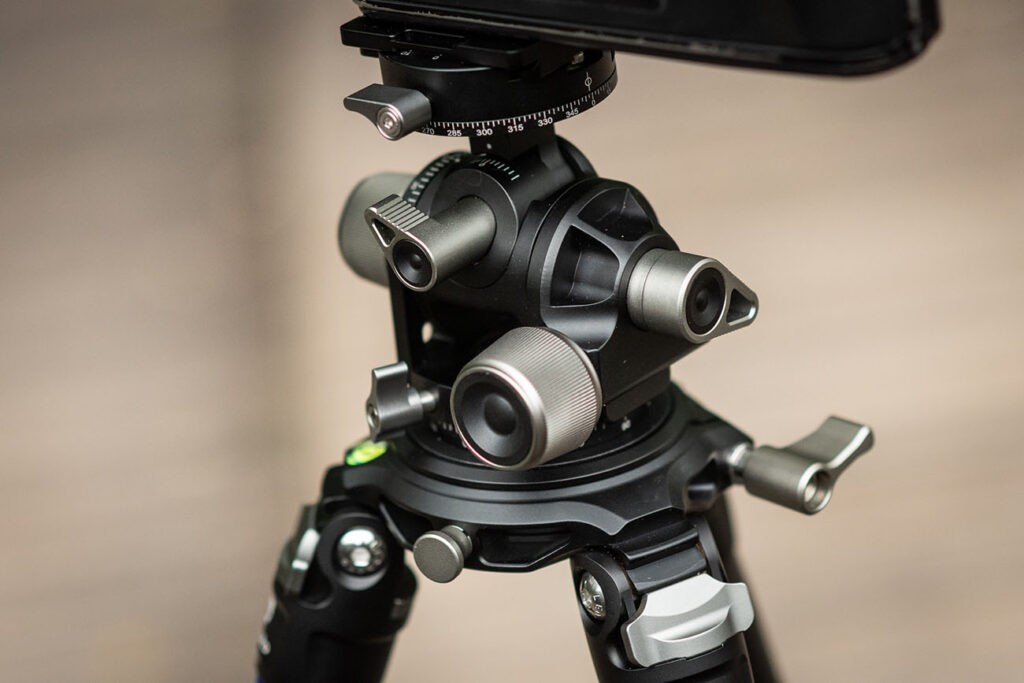
I brought up all those models above to set a reference point necessary to judge the Leofoto G4. Even though I mentioned only a few models, they are just a scrap of a whole market, and it is easy to notice that when it comes to design there is always a compromise. In a brief summary, If you want to go light, you must pay. If you want to go cheap you must lift. The only question left is, would a cheaper and lighter choice be less precise? Let’s check! The Leofoto G4 is relatively light (1.5 lb), quite handy (4 inch height) and also well-priced (around $450). Of course, it is not cheap by any means, but when you consider its capabilities (declared lift capability of 44 lb) and the price of competitor models, it is definitely worth a try.
Leofoto G4
It’s not a coincidence that the G4 name is similar to the D4 model produced by Arca Swiss. Actually, it is an exact copy of this recognizable Swiss head. When it comes to construction, both are also very similar to GH-PRO (not GH-PRO II) from Sunwayfoto. All three products are capable of precise regulation and the option to quickly change the level of a camera after releasing the lock. Leofoto has made some improvements to the overall design of the Arca Swiss D4 which is why G4 is a bit lighter than D4, but lacks the manufacturing precision of the Swiss company.
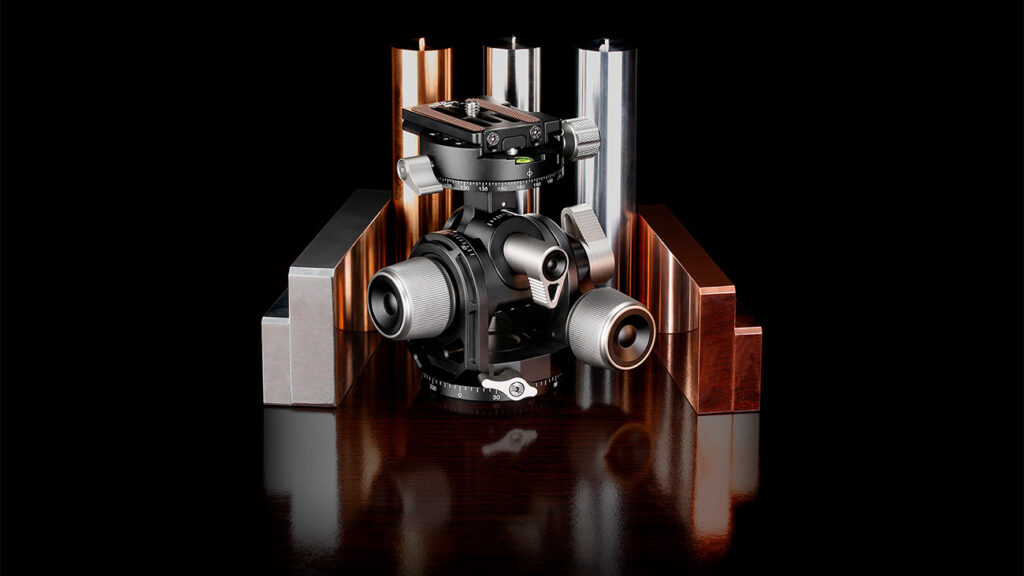
Look, detailed finish, and precision that was put into making this product are excellent. The G4 looks good and well-designed. It is made from high-quality materials and definitely has a premium feel to it. The outside shell and parts are made from aluminum and the inside is made from brass and stainless steel. ⅜ inch nest is also made from brass. Basically, every metal element was specially made to reduce weight.
It was quite surprising that the manufacturer did not include any kind of case, since there is one in a G2 set that is twice as cheap. But we do get a really nice, dedicated quick release plate NP-60 in Arca Swiss standard.
Usability
The G4’s ergonomics are very good. All the scales that show the angle of movement have a nice aesthetic and are easy to read. There is a small spirit level placed on the top, but unfortunately in most situations, it will be covered by a camera. Arca Swiss D4 has a better solution since it has 2 separate spirit levels that are visible even with a mounted camera. Massive, metal knobs with delicate carvings that prevent your fingers from slipping, have a good and intuitive position. They are used for micro-adjustments. The frontal one is used for up and down tilts (+90 and – 50, degrees); the other one lets you level with the horizon (+/- 45 degrees). It is worth noting that we will use our left hand to use the leveling knob. I thought it was a flaw, at first, since I always used my right hand to manipulate the knobs. But after getting used to this type of placement, I started to appreciate that you can simultaneously use one hand for level and another to set up a camera. Tear-drop shaped knobs are used to release the lock so you can freely move the head in any direction when they are totally loosened. Warning: remember to always hold your camera before you release locks. I almost broke my gear when I unintentionally pulled a lock, and the camera swung forward with a large heavy lens attached. Mike Kelley also mentioned that in his Arca Swiss D4 review.

Leofoto G4 offers quite a high range of movements, but you need to remember that there are some limits. For example, if you want to set the camera vertically you need to switch the head’s orientation. On other hand, you may use an L-bracket and it won’t be a problem any longer.
The G4 has both a panning base and a panning head on top. The second option allows you to pan with an already leveled camera. To unlock this option you need to pull small but very comfortable leavers. They are very sturdy and you can position them any way you want opposite to other handles. Again it is important to note that panning is not geared. Because of that, the base and head’s finish are light and small, although I wish Leofoto had a G4 version with a top geared pano.
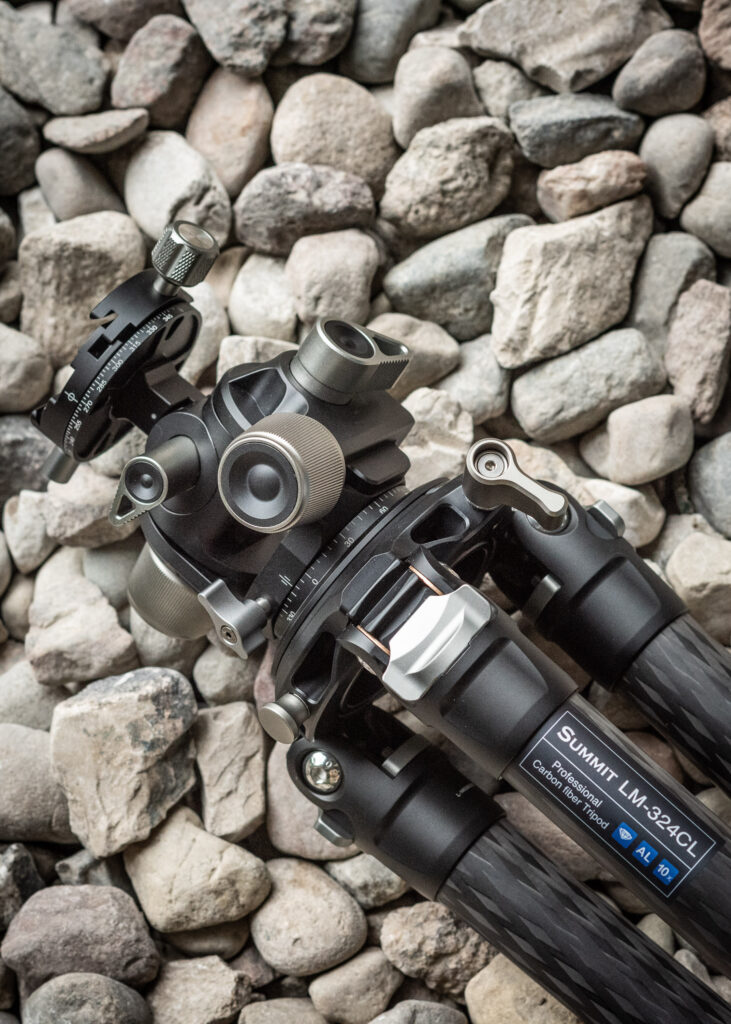
I tested Leofoto’s head with different cameras and tripods and have to say its strongest advantage is weight. Because of it, you don’t necessarily need a large and heavy tripod to use it with. Even when you carry G4 with lighter tripods it won’t lean toward the front when you lift it up and does not impact the overall weight of the kit. For my work, I used it with the tallest Leofoto tripod LM-324CL which weighed 4 lb and the balance was perfect for my needs.
Sturdiness and Stiffness
Low stability would be the only flaw I found, however, for this I would need to blame the light weight of the G4 head. While photographing with a standard full-frame kit, you won’t notice any looseness or shakiness that would affect your work. All locks are very precise, so there is no need to do any adjustments after you block the knob.
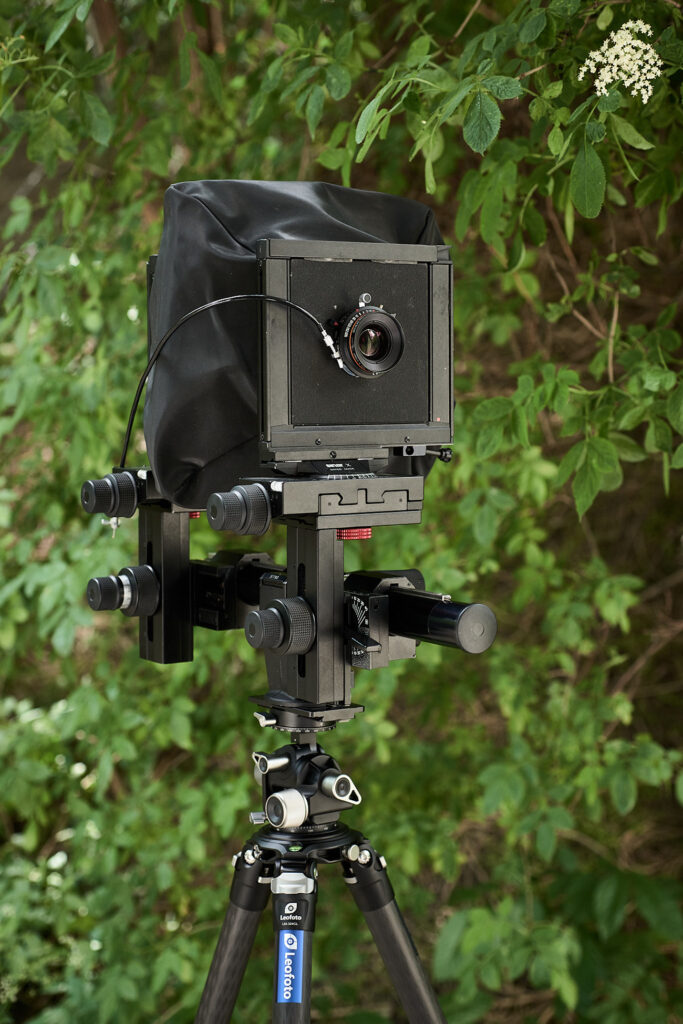
The declared leverage weight capacity is 44 lbs but you need to remember that the weight of a camera is not everything, also the head’s range of movements that we want to use. When I decided to mount a Sinar X large format camera, little losses became noticeable. Tilting was easy up to 20 degrees, but when I lowered the camera and pointed it to the floor, and then lift it back up, I had to use plenty of force. Even with activities typical for this kind of photography, like putting in a 4×5 film holder, you clearly have some sections jiggle. Of course, this is a pretty extreme test to put a medium format camera on such a lightweight head (1.5 lb), and the results would be probably similar if I put a full-frame camera with a 600mm lens. For this, I blame the very narrow neck that is connecting the clamp to the rest of the body and the construction of the gear responsible for holding it up.
However it is important to ask yourself a question, is it even reasonable to expect from such a light setup to lift a camera set that weighs over 14 lbs (Sinar X). Is it even possible to achieve better sturdiness with this kind of set? Another question would be, do I even need a sturdier head for architecture if my camera kit weighs less than 4 lb?
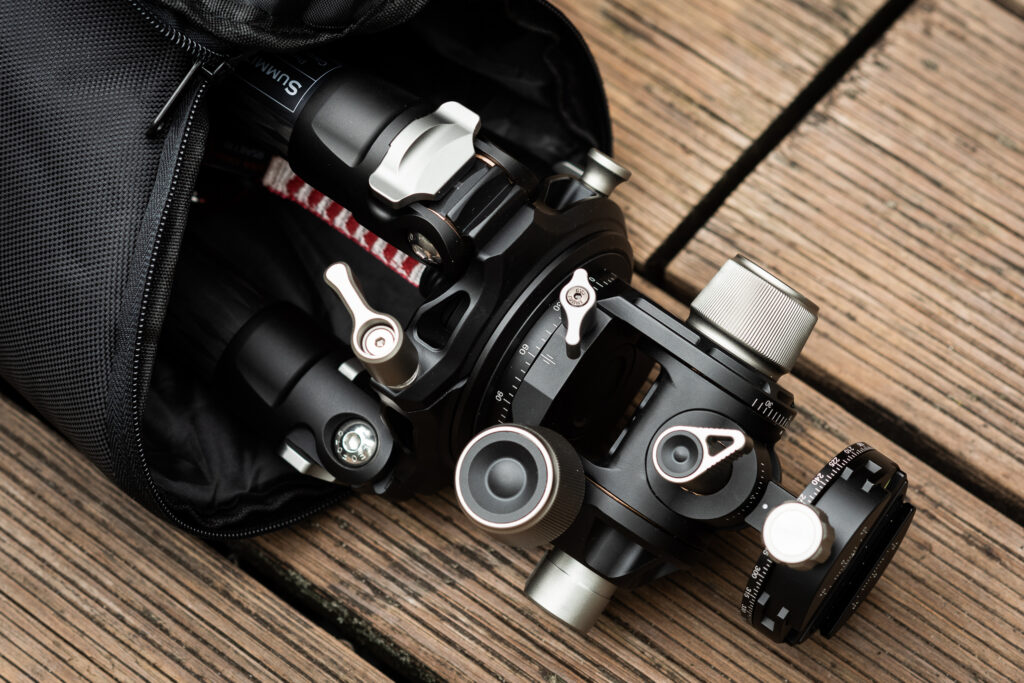
Conclusion
For a professional architecture and interior photographer’s work, I can confidently say that the Leofoto G4 will be a really great choice. The head is stiff enough for most gear and its low weight and convenience of use are definitely worth the price.
For a long time now my “go-to” set was Sunwayfoto GH-PRO II+. After this comparison, there is no coming back from the G4 since it’s much sturdier and more resilient. The only thing missing after I sold my Sunway is the geared pano. I also tested Manfrotto 410 head, which is relatively cheap, but I wouldn’t want to use it even if it was free.
I had a little romance with the Arca Swiss C1 Cube. It is a really great thing! It has a beautiful and precise design, however, the price is absurd and it’s also quite bulky.
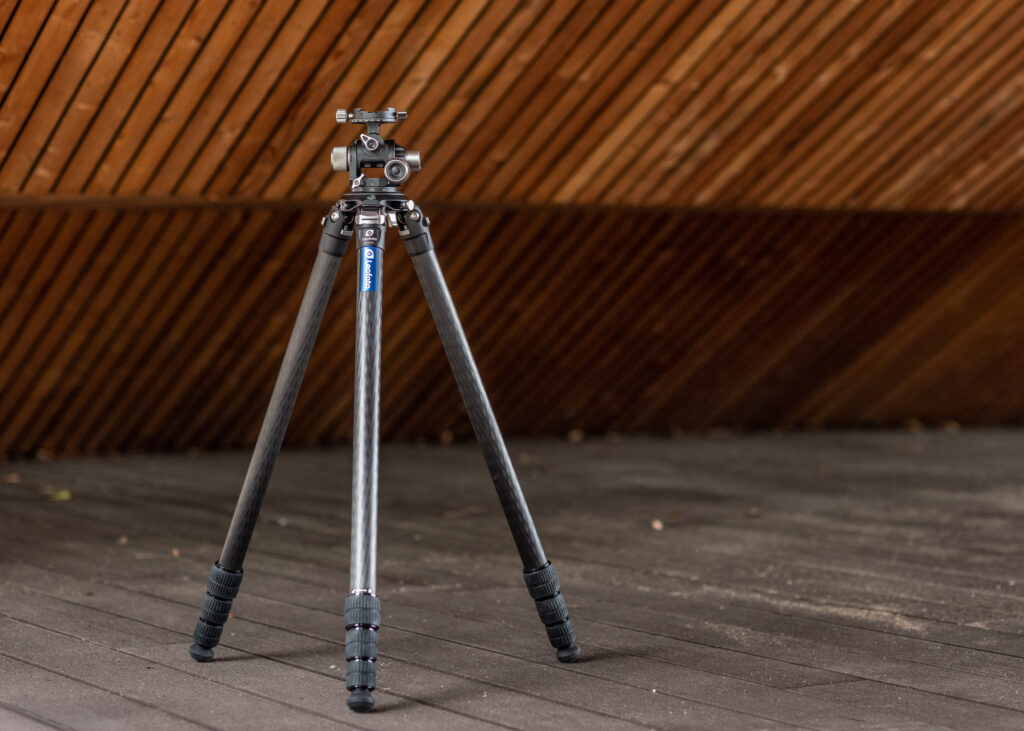
$450 for Leofoto G4 is not a cheap price for some photographers. Aside from this, I really think that quality wise it is an excellent alternative for much pricier Arca Swiss products. In professional work nothing is and nothing should be cheap. Geared heads are often heavy, pricey, and less sturdy than ball heads, but the mentioned Leofoto model is comparably small, and light and its price is attractive enough to make it one of the best choices for pro architecture photographers.
I think it is also worth checking out the G4’s little brother, the G2, when you look for a geared head. So should this comparison be my future project?
